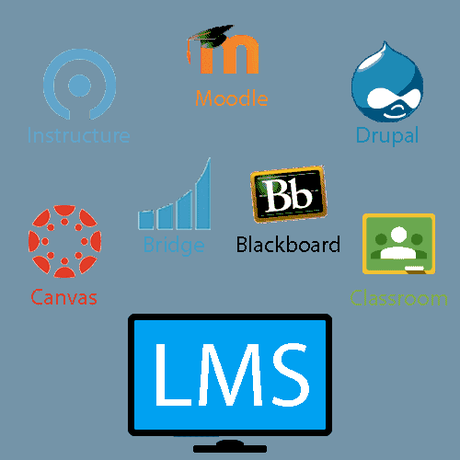Today, there are a number of Learning Management Systems (LMS) on the market that can help organizations manage and deliver eLearning content. However, with such a wide range of options to choose from, it can be difficult to determine which system is right for your needs.
In this blog post, we will explore a few examples of LMS and outline the features that make them stand out from the competition. We hope this information will help you make an informed decision when selecting an LMS for your organization.

As higher education institutions continue to shift towards using Learning Management Systems (LMS) as a way to manage and deliver course content, it is important for faculty to be familiar with the different types of LMS available. In this blog post, we will provide examples of three popular LMS platforms and discuss the pros and cons of each. We hope that this information will help you decide which platform is the best fit for your needs.
A learning management system, or LMS, is a platform for online learning. It enables educators to create, manage, and deliver courses online. There are many different types of LMS platforms available, each with its own strengths and weaknesses. In this blog post, we'll explore some examples of popular LMS platforms and discuss the benefits and drawbacks of each one.
There are many different types of Learning Management Systems, LMSs. It can be difficult to decide which system is right for your organization. In this blog post, we will give you examples of three different LMSs. Each system has its own advantages and disadvantages.
What is LMS?
LMS stands for Learning Management System. It is a software application that helps educators manage and deliver educational content and track student progress. LMSs are used by schools, universities, and businesses to create and distribute learning materials, assign quizzes and tests, and monitor employee or student performance.
Some popular LMSs include Blackboard, Canvas, and Moodle.
LMSs offer a variety of features and benefits that can be tailored to the needs of any educational institution or organization. For example, LMSs can help schools save time and money by automating administrative tasks such as grading, course registration, and class schedules. Additionally, LMSs can provide educators with insights into student performance and help them identify areas where students need additional support. And finally, LMSs can enable organizations to deliver training and development programs to employees or customers.
There are a few things to keep in mind when selecting an LMS. First, consider the needs of your organization and the features that would be most beneficial to you. Second, compare different LMSs to find the one that best meets your needs. And finally, make sure to read reviews and talk to other users before making your final decision.
Examples of LMS-

1. Moodle
Moodle is an open-source learning management system (LMS) that is used by schools and universities all over the world. It is very versatile and can be used for a variety of purposes, including creating online courses, managing student progress, and delivering assessments.
2. Blackboard Learn
Blackboard Learn is a popular LMS that is used by many schools and universities. It is known for its user-friendly interface and robust features. Blackboard Learn has a wide range of features that can be used to create and deliver online courses, track student progress, and manage assessments.
3. Canvas
Canvas is another popular LMS that is used by many schools and universities. It is known for its user-friendly interface and robust features. Canvas has a wide range of features that can be used to create and deliver online courses, track student progress, and manage assessments.
4. D2L Brightspace
D2L Brightspace is an LMS that is used by many schools and universities. It is known for its user-friendly interface and robust features. D2L Brightspace has a wide range of features that can be used to create and deliver online courses, track student progress, and manage assessments.
5. Schoology
Schoology is an LMS that is used by many schools and universities. It is known for its user-friendly interface and robust features. Schoology has a wide range of features that can be used to create and deliver online courses, track student progress, and manage assessments.
6. Sakai
Sakai is an open-source LMS that is used by many schools and universities. It is known for its user-friendly interface and robust features. Sakai has a wide range of features that can be used to create and deliver online courses, track student progress, and manage assessments.
7. Edmodo
Edmodo is an LMS that is used by many schools and universities. It is known for its user-friendly interface and robust features. Edmodo has a wide range of features that can be used to create and deliver online courses, track student progress, and manage assessments.
8. Google Classroom
Google Classroom is an LMS that is used by many schools and universities. It is known for its user-friendly interface and robust features. Google Classroom has a wide range of features that can be used to create and deliver online courses, track student progress, and manage assessments.
These are just some of the most popular LMSs that are used by schools and universities. Each has its own unique features and benefits that make it a good choice for certain purposes. Choose the one that best meets your needs and start using it to create and deliver online courses!
9. Adobe Connect
Adobe Connect is an LMS that is used by many schools and universities. It is known for its user-friendly interface and robust features. Adobe Connect has a wide range of features that can be used to create and deliver online courses, track student progress, and manage assessments.
10. Learning Management Systems (LMS)
LMS is an educational software that helps the teachers and professors to create, deliver, and manage the courses and track the student's progress. There are many different types of LMS available, each with its own set of features and capabilities.
The most popular LMS include Moodle, Blackboard Learn, Canvas, D2L Brightspace, Schoology, Sakai, Edmodo, and Google Classroom. Each of these LMS has its own strengths and weaknesses, so it is important to choose the right one for your needs.
Conclusion-
While there are many different types of LMS, each with its own benefits and drawbacks, the examples we've looked at provide a good starting point for those considering implementing an LMS into their organization.
Before making a final decision, be sure to do your own research and ask around to see what other organizations have had success (and failure) with using different types of LMS. With so much information available online, it should be easy to find the right system for your needs.
Although there are many types of LMS software on the market, they all have one common goal: to make training and learning easier for employees. We've looked at a few different types of LMS software and how they can be used in various industries. Hopefully, this has given you a good idea of what an LMS can do for your business and some ideas about which type might work best for you.
If you want more information or need help deciding which option is best for you, don't hesitate to reach out to us. Our team would be happy to discuss your needs and recommend the perfect LMS solution for your company.

